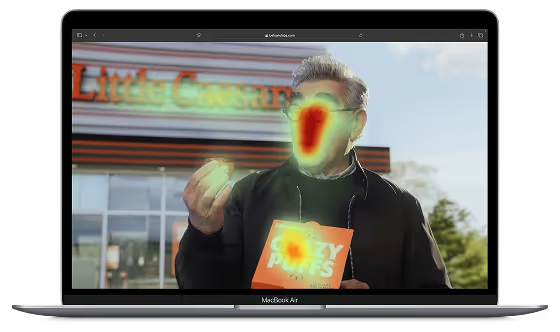What makes someone reach for an oat milk carton covered in rambling, seemingly pointless text?
Oatly’s rise from a sleepy Swedish food processor to a $10 billion lifestyle phenomenon reveals the answer, showcasing one of marketing’s most powerful secrets: the importance of behavioral science.
From rational selling points to emotional identity
For two decades, Oatly stuck to the traditional rules of marketing, focusing on rational benefits like “cholesterol-lowering” and “calcium-enriched.” As a result, sales stayed flat. Until everything changed.
In 2012, Oatly’s new leadership team did something most brands never dare to do: they challenged their own assumptions. Rather than asking “how do we sell more oat milk to vegans?” they reframed the question to “how do we convince regular milk drinkers to switch?”
That shift unlocked a powerful realization: logical arguments weren’t changing behavior. People weren’t rationally comparing nutrition labels; they were making fast, emotional decisions rooted in identity and values.
Oatly’s transformation began the moment they stopped following the old playbook and started rewriting the rules.
How Oatly built its brand
The breakthrough came when Oatly stopped playing the logic game and started playing the emotion game.
Traditional market research would have pushed them to compete with other plant-based alternatives, emphasizing superior taste, price, and nutrition. But the company’s higher-ups were beginning to understand a deeper truth: people don’t just buy products, they buy into movements.
Oatly's genius was recognizing two powerful cultural currents: growing environmental anxiety and skepticism toward "unnatural" processed foods. Instead of competing in the tiny plant-milk pond, they declared war on the entire dairy ocean.
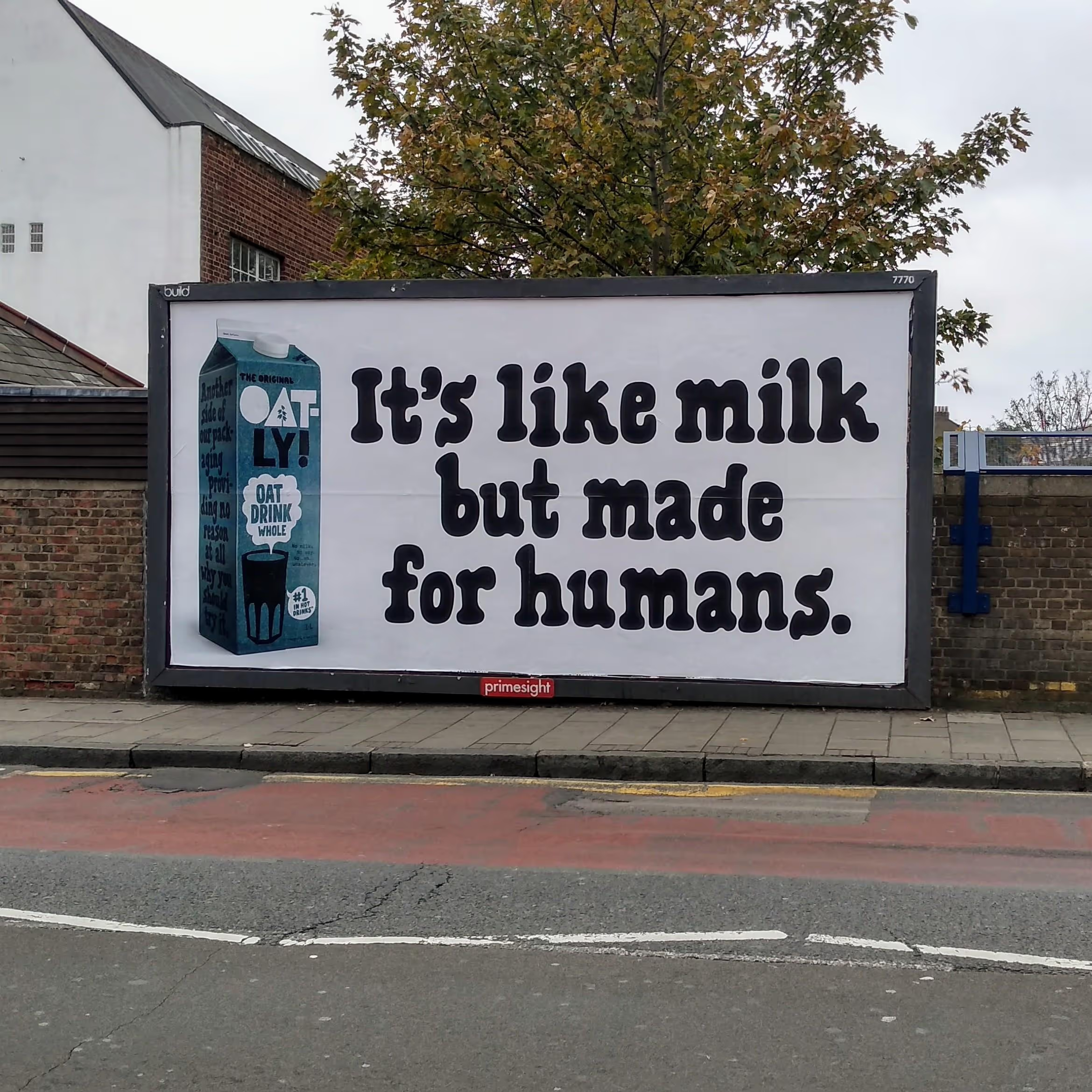
The brand’s bold positioning line, “It's like milk, but made for humans,” was more than product messaging. It was identity ammunition. It gave eco-conscious consumers permission to feel superior while sipping their morning latte.
The packaging psychology revolution
Of course, big ideas are only powerful if they reach people. And here’s where Oatly’s grasp of consumer behavior really paid off. Knowing they couldn’t match Big Dairy’s massive ad budgets, they turned their product packaging into the primary marketing channel.
But instead of the sleek, minimal design that focus groups might have preferred, they filled their cartons with rambling, playful text. One side literally reads: “Before we wrote this sentence, there was a lot of empty space on the side of this package and we didn’t know what to do with it really…”
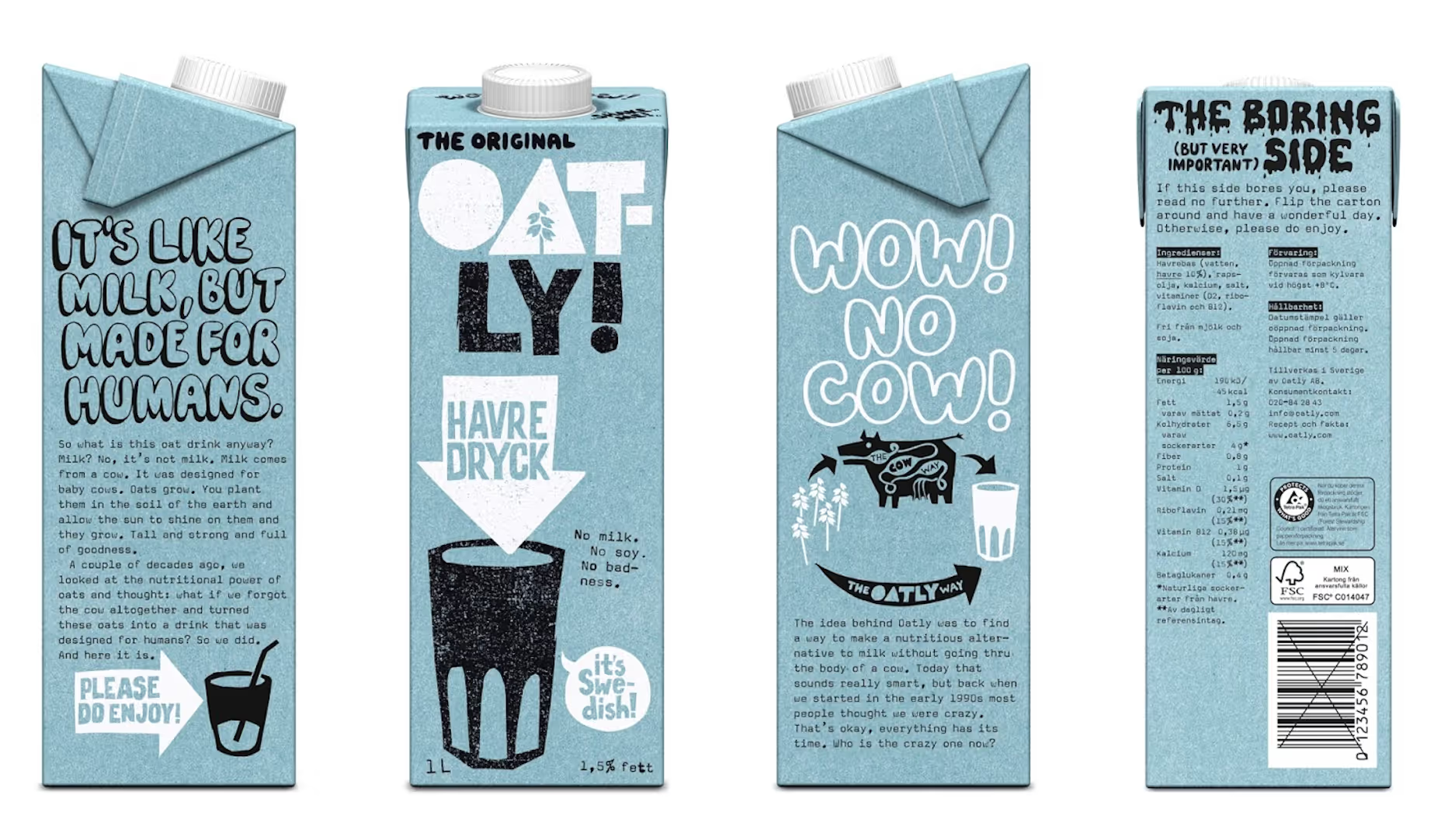
This broke every packaging rule. It was verbose when it should have been concise, strange when it should have been clear. And yet, it worked, because it tapped into key behavioral principles:
- Curiosity gap: The unexpected design creates cognitive dissonance that demands resolution. Shoppers feel compelled to pick it up and read more.
- Social proof: The anti-corporate tone signals authenticity to consumers weary of slick, polished marketing.
- Distinctiveness: In a sea of nearly identical milk cartons, Oatly becomes impossible to ignore.
The fearless fame formula
Oatly also understood something most brands fear: controversy creates conversation.
When the Swedish Dairy Association sued Oatly over its bold messaging, conventional wisdom said to back down and apologize. Oatly did the opposite, publishing the entire 172-page lawsuit online and running newspaper ads casting themselves as David versus Goliath.
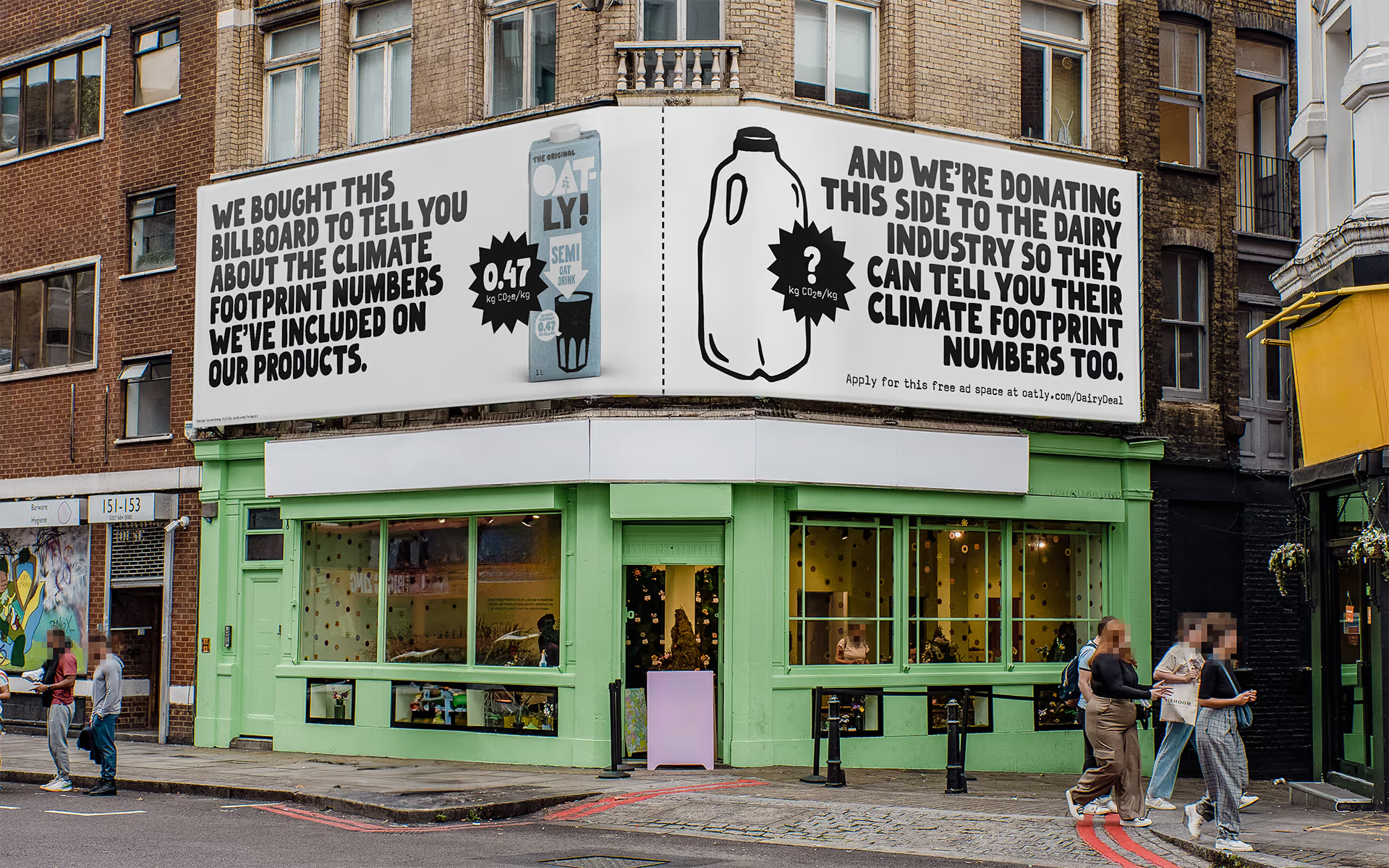
The lawsuit turned a niche oat milk brand into a cause, giving consumers a clear villain to resist and a hero to rally behind. Most importantly, it delivered millions in free media coverage that their modest budget could never have bought.
The subconscious success story
Oatly's explosive growth proves a fundamental marketing truth: 95% of consumer decisions happen below conscious awareness. Simply put, what people say rarely reflects what they actually do.
The brand’s strategy succeeded because it spoke directly to the emotional and identity drivers that actually influence behavior. They created a movement, an identity marker, and a conversation starter.
Every weird design choice, provocative message, and fearless stance was carefully calibrated to trigger the subconscious associations that drive real purchasing decisions.
What made Oatly truly unique was their willingness to be deliberately weird. While competitors played it safe with focus-group-tested messaging, Oatly embraced the behavioral truth that distinctiveness beats likability every time.
Your brand's behavioral opportunity
Oatly’s story is proof of the power of understanding what really drives consumer behavior. While your competitors chase rational features and benefits, you could be tapping into the emotional and instinctive responses that actually determine success.
The question is: are you making decisions based on what people say, or what they actually do?
Ready to see what behavioral science reveals about your brand and campaigns? Behavio’s ad testing applies the same subconscious measurement principles that could have predicted Oatly’s success.
Try it for yourself—book a demo!
Frequently asked questions
Oatly stopped focusing on rational benefits like nutrition and tapped into emotional drivers — identity, values, and curiosity. By turning its packaging into a conversation and positioning itself as “for humans,” it built a movement instead of just selling oat milk.
Don’t just ask what people say they want, uncover what drives their subconscious choices. Distinctiveness and emotional relevance beat rational claims every time.
The playful, rambling text broke design norms but triggered behavioral principles: curiosity, authenticity, and distinctiveness. It made shoppers stop, read, and remember — all without big ad budgets.





.avif)

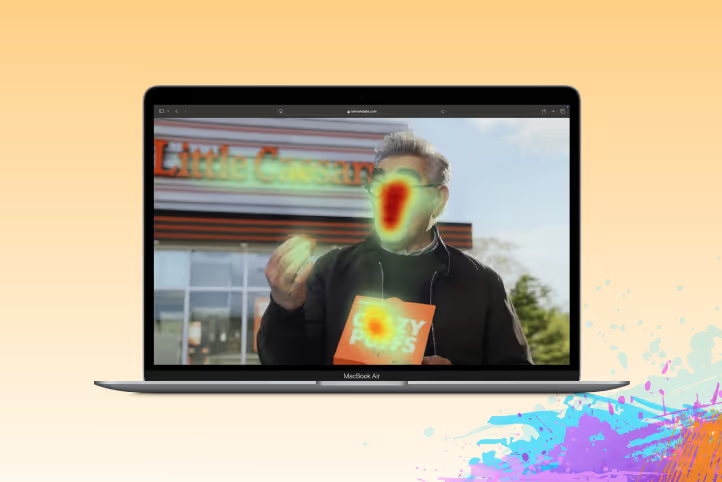

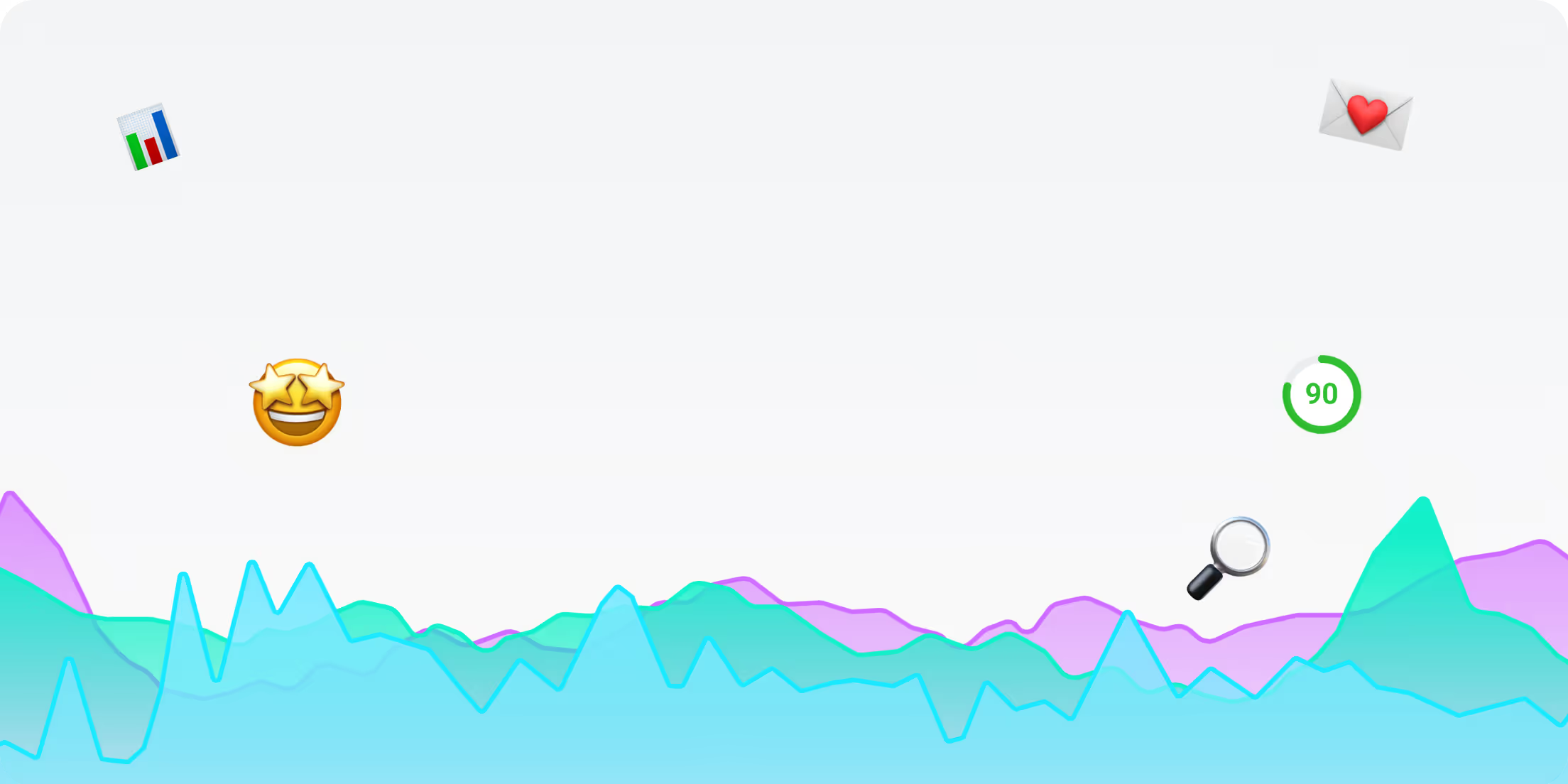
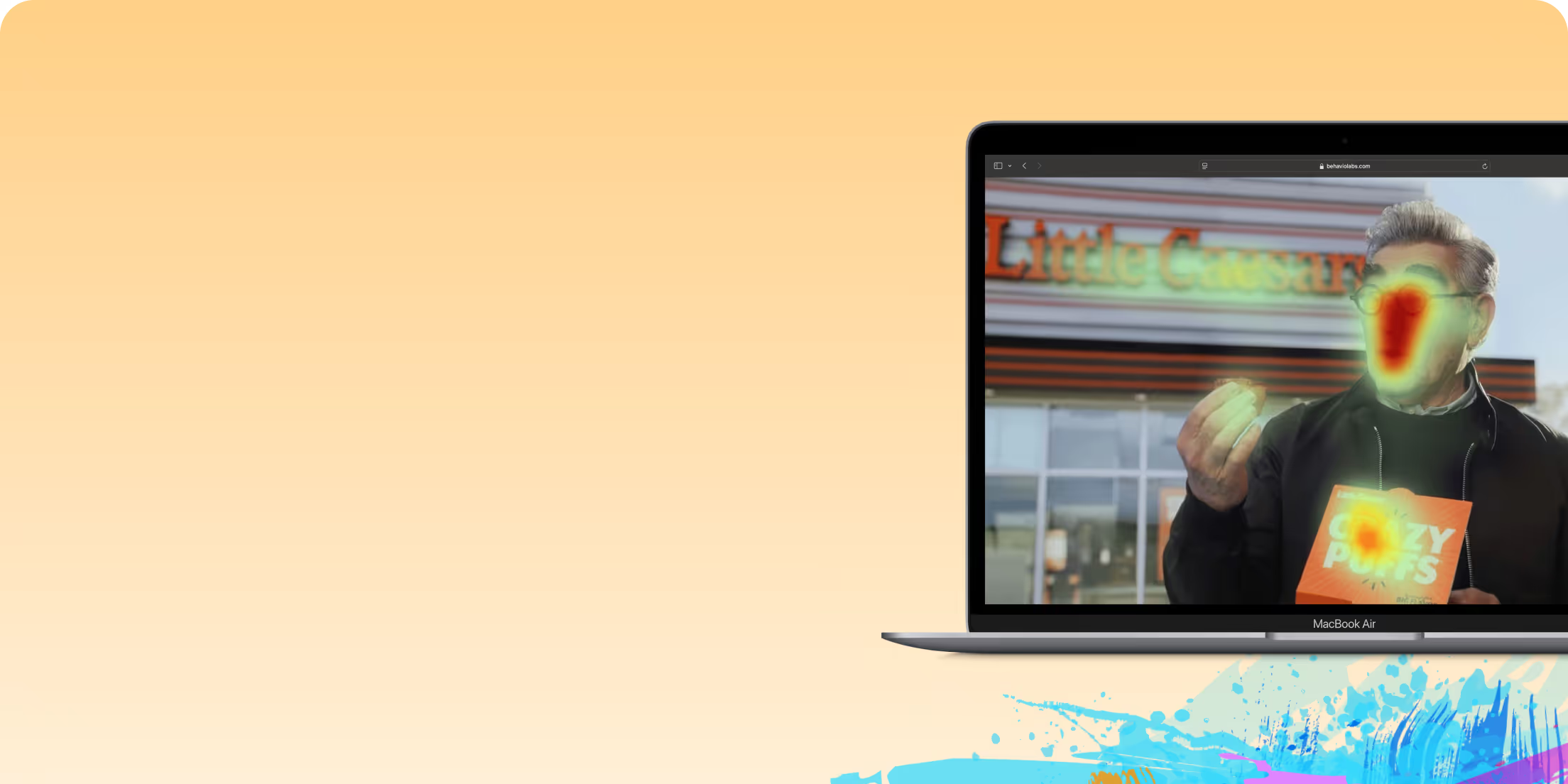
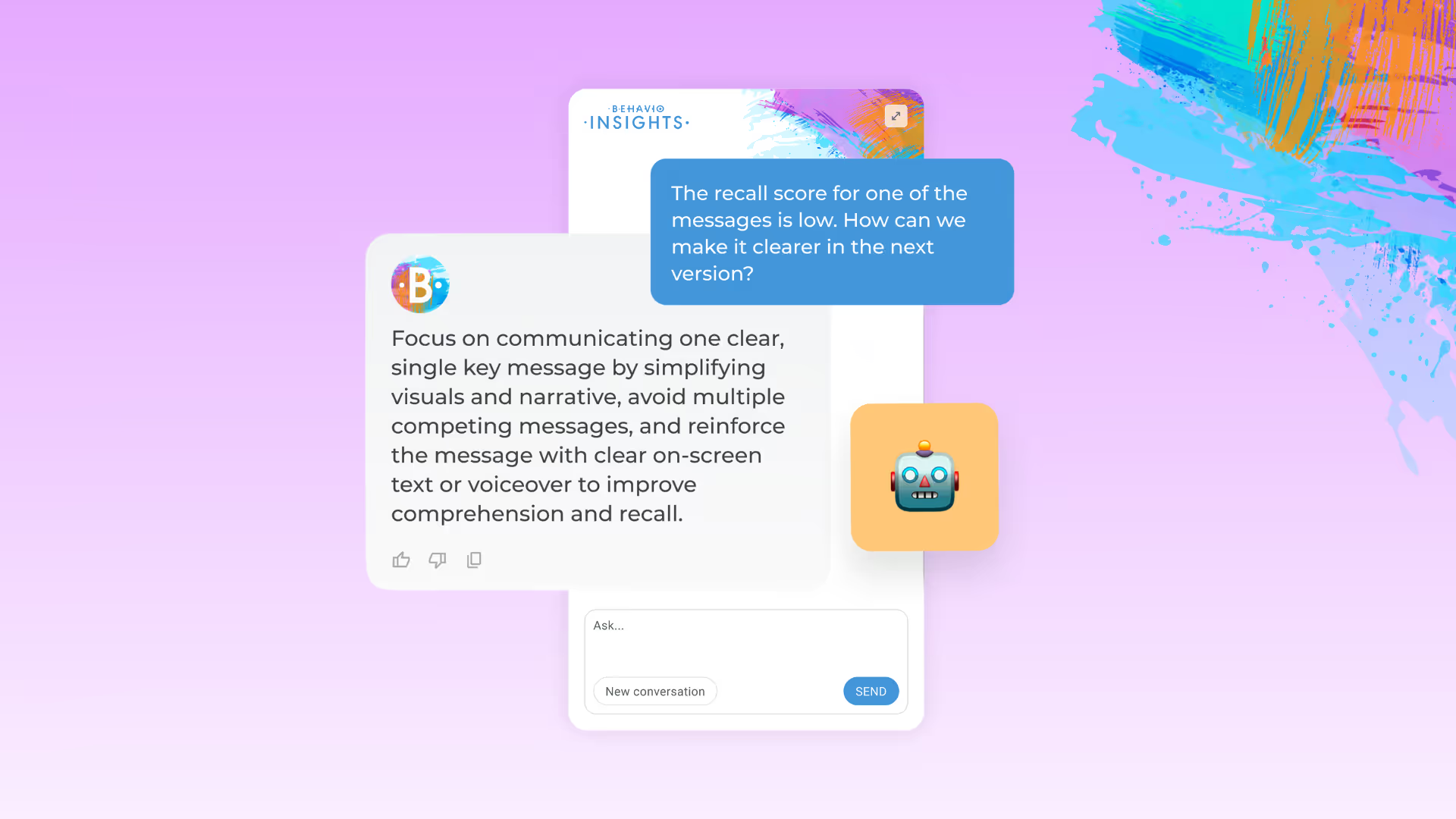
.avif)




